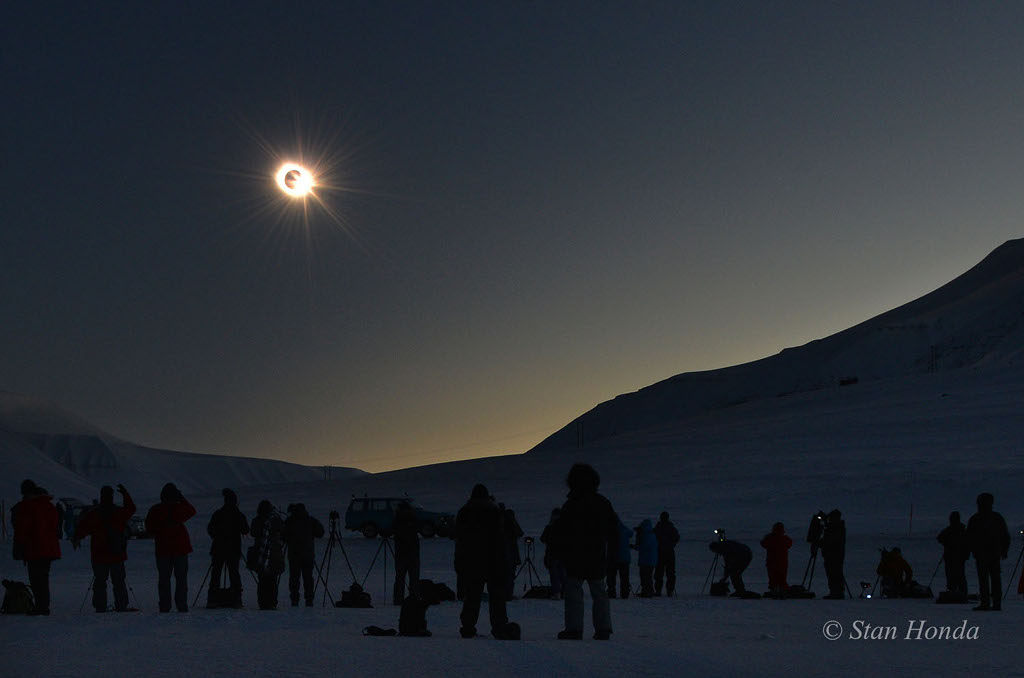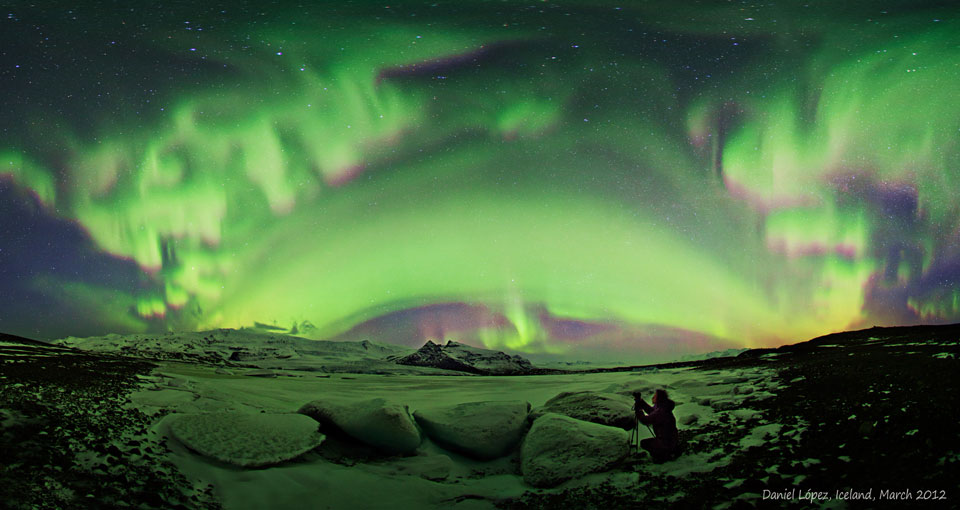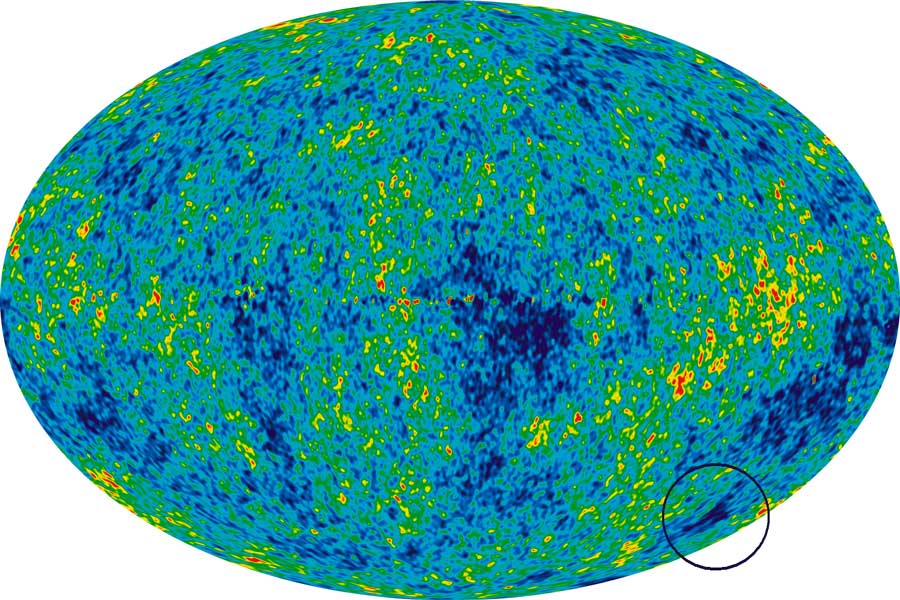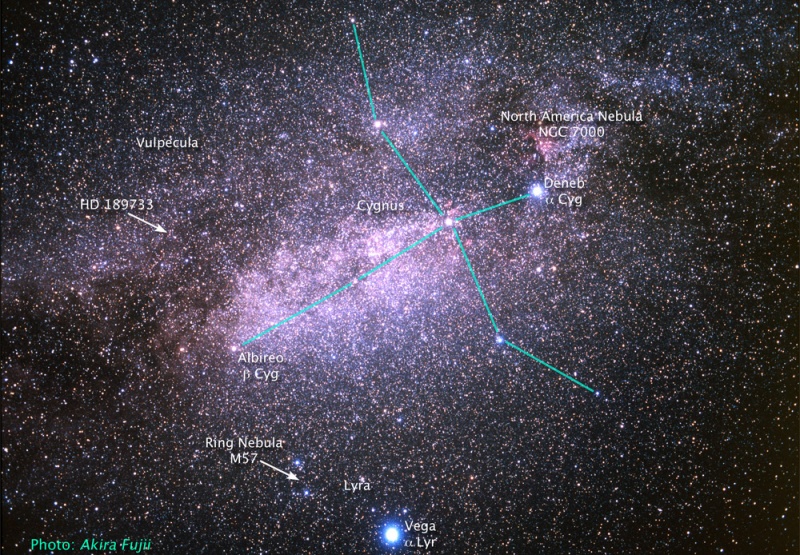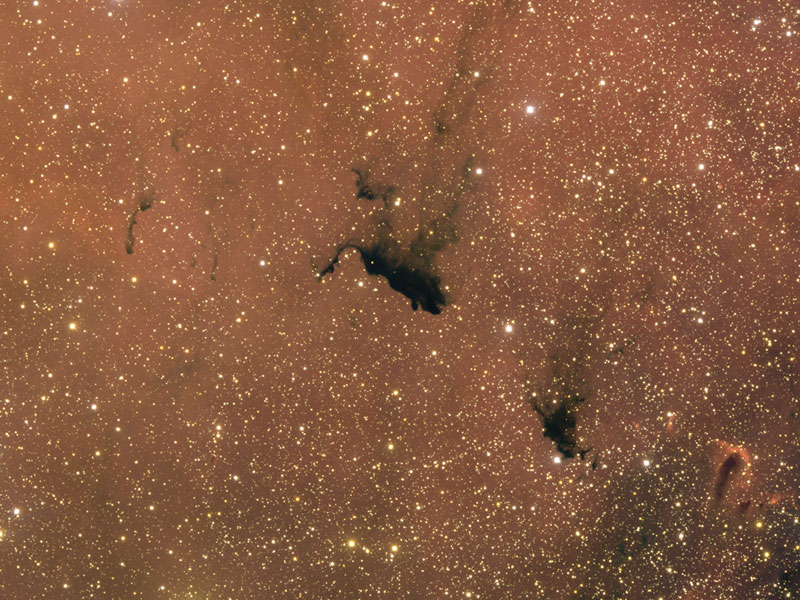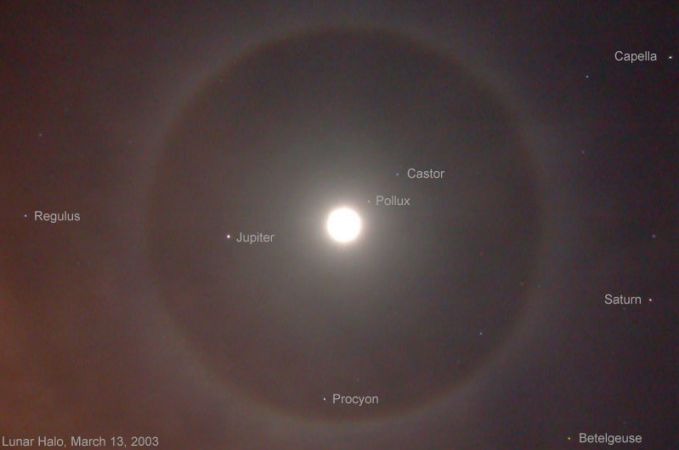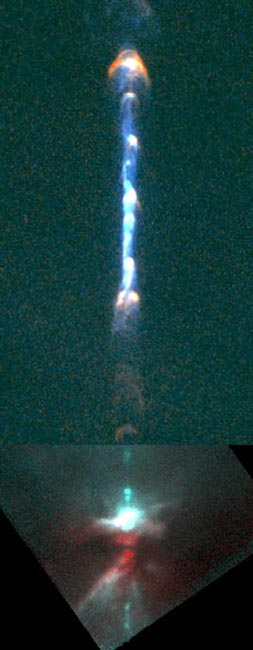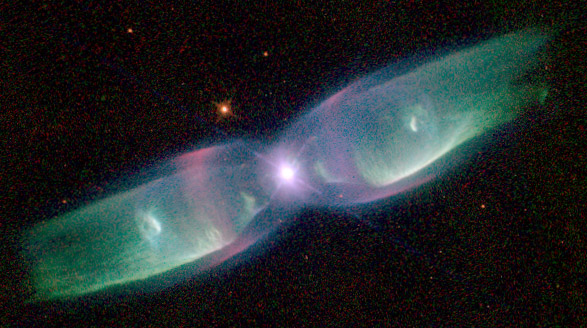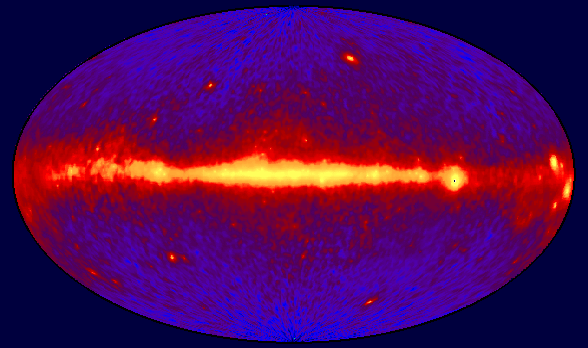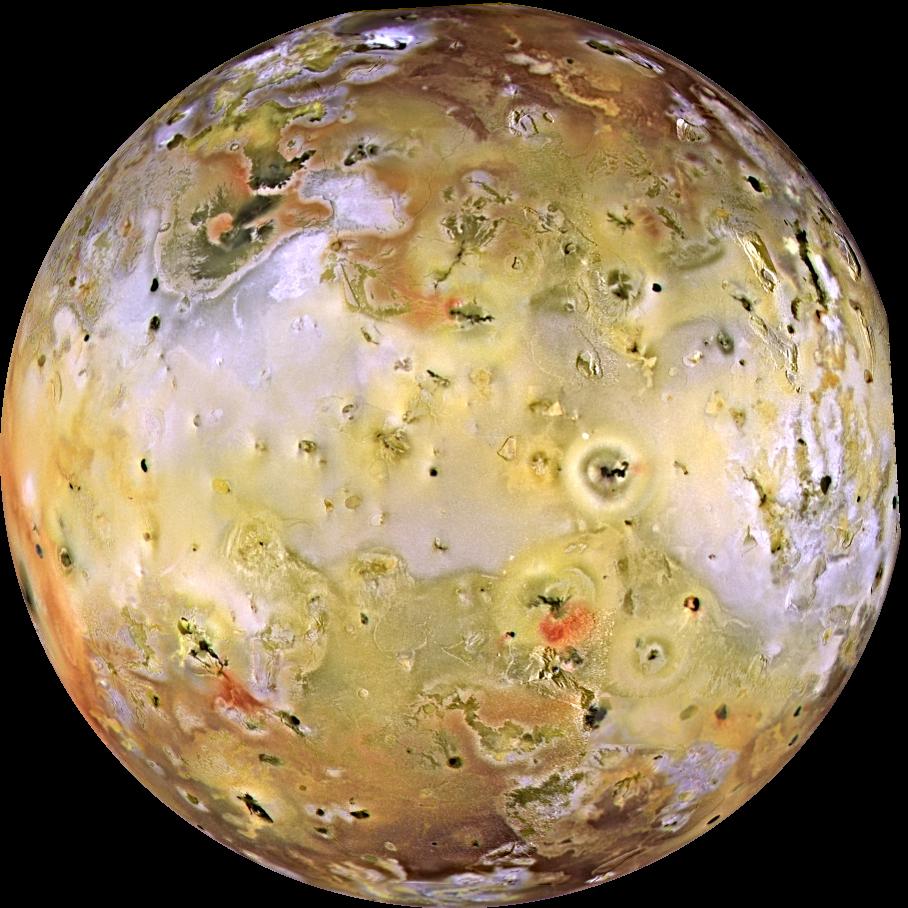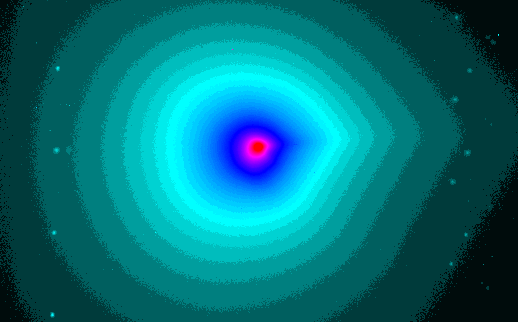| << Previous | Index | Next >> |
2015 Snowy and cold is weather you might expect at the start of spring for Longyearbyen on the Arctic archipelago of Svalbard, Norway. But that turned out to be good weather for watching the Moon's umbral shadow race across northern planet Earth. The region was plunged into darkness for 3 minutes during the March 20 total solar eclipse while insulated eclipse chasers witnessed the dark Sun in the cold clear sky. In this well-timed snapshot captured near the end of totality, the Moon's shadow sweeps away from the horizon and the solar corona fades as the lunar disk just begins to uncover the Sun. Streaming past the Moon's edge, direct rays of sunlight create the fleeting appearance of a glistening diamond ring.
2014 Towering 3,000 feet from base to summit, the famous granite face of El Capitan in Earth's Yosemite National Park just hides the planet's north celestial pole in this skyscape. Of course, the north celestial pole is at the center of all the star trails. Their short arcs reflecting the planet's daily rotation on its axis are traced in a digital stack of 36 sequential exposures. Linear trails of passing airplane navigation lights and a flare from car lights along the road below are also captured in the sequential stack. But the punctuated trail of light seen against the sheer El Capitan itself follows a climbing team on the night of November 8, 2013. The team is ascending toward the summit along The Nose, a historic rock climbing route.
2013 Moving left to right near the center of this beautifully detailed color composite, the thin, bright, braided filaments are actually long ripples in a sheet of glowing gas seen almost edge on. The interstellar shock wave plows through space at over 500,000 kilometers per hour. Cataloged as NGC 2736, its elongated appearance suggests its popular name, the Pencil Nebula. The Pencil Nebula is about 5 light-years long and 800 light-years away, but represents only a small part of the Vela supernova remnant. The Vela remnant itself is around 100 light-years in diameter, the expanding debris cloud of a star that was seen to explode about 11,000 years ago. Initially, the shock wave was moving at millions of kilometers per hour but has slowed considerably, sweeping up surrounding interstellar material. In the narrowband, wide field image, red and blue-green colors track the characteristic glow of ionized hydrogen and oxygen atoms.
2012 If you see a sky like this -- photograph it. Three nights ago in Iceland, an adventurous photographer (pictured) chanced across a sky full of aurora and did just that. Afterwards, by stitching together five smaller photographs, the entire aurora-lit sky was recreated in this 180-degree panorama taken from Vatnajökull glacier. Auroras are sparked by energetic particles from the Sun impacting the magnetic environment around the Earth. Resultant energetic particles such as electrons and protons rain down near the Earth's poles and impact the air. The impacted air molecules obtain excited electrons, and when electrons in oxygen molecules fall back to their ground state, they emit green light. Auroras are known to have many shapes and colors.
2011 How could part of the early universe be so cold? No one is sure, and many astronomers now think that the CMB Cold Spot on the cosmic microwave background (CMB) radiation is not particularly noteworthy. As the early universe expanded and cooled, it suddenly and predictably became transparent. The photons that come to us from that epoch are seen all around us as the CMB. Now this radiation field is quite uniform but does have slight warm and cool spots that tell us a great deal about the early universe that could have imprinted them. Except, possibly, one spot. This CMB Cold Spot, circled above on the WMAP 7-year all-sky map, has attracted attention as possibly being too large and too cold to be easily explained. Published speculation has included spectacular progenitor hypotheses that involve a supervoid, a cosmic texture, or even quantum entanglement with a parallel universe. Quite possibly, though, even a more mundane universe might be expected to show such a statistical peculiarity, and so explanations of the CMB Cold Spot like these might say more about human imagination than the early universe.
2010 Twice a year, at the Spring and Fall equinox, the Sun rises due east. In an emphatic demonstration of this celestial alignment, photographer Joe Orman recorded this inspiring image of the Sun rising exactly along the east-west oriented Western Canal, in Tempe, Arizona, USA. But he waited until one day after the northern Spring equinox, in 2001, to photograph the striking view. Why was the rising Sun due east one day after the equinox? At Tempe's latitude the Sun rises at an angle, arcing southward as it climbs above the horizon. Because the distant mountains hide the true horizon, the Sun shifts slightly southward by the time it clears the mountain tops. Waiting 24 hours allowed the Sun to rise just north of east and arc back to an exactly eastern alignment for the photo. Today is another Equinox + 1 day, with the Sun crossing the celestial equator yesterday at about 17:32 Universal Time.
2009 Scanning the entire sky in gamma-rays, photons with over 50 million times the energy of visible light, the Fermi mission's Large Area Telescope (LAT) explores the high-energy universe. This all-sky map constructed from 3 months of LAT observations (August 4 to October 30, 2008) represents a deeper, better-resolved view of the gamma-ray sky than any previous space mission. What shines in Fermi's gamma-ray sky? A new paper describes the 205 brightest gamma-ray sources, but this map highlights a Fermi "top ten" list of five sources within, and five sources that lie beyond our Milky Way Galaxy. Within our galaxy: the Sun traces a faint arc across the map between the observation dates, LSI +61 303 is an X-ray binary star about 6,500 light-years away, PSR J1836+5925 is a type of pulsar (spinning neutron star) that is only seen to pulse at gamma-ray energies, and 47 Tuc is a globular star cluster some 15,000 light-years away. A fifth galactic source (unidentified), just above the center of the galactic plane, is intriguing because it is a variable source and has no clear counterpart at other wavelengths. Beyond our galaxy: NGC 1275 is a large galaxy at the heart of the Perseus galaxy cluster some 233 million light-years away, while 3C 454.3, PKS 1502+106, and PKS 0727-115 are active galaxies billions of light-years distant. Another unidentified source, seen below the galactic plane, is likely beyond the boundaries of the Milky Way. Its nature remains a mystery.
2008 The star cataloged as HD 189733 is a mere 63 light-years away. Its location is indicated in this deep, wide-angle image of the sky centered on the northern constellation of Cygnus. Considering the many bright stars, nebulae, and star clusters in the region more familiar to skygazers, HD 189733 may not seem to be remarkable, but it is known to have at least one hot, jupiter-sized planet orbiting very close, with an impressively short period of 2.2 days. Because the planet regularly eclipses its parent star, astronomers can study starlight that passes directly through the planet's atmosphere and identify molecules through spectroscopy. Following the discovery of water vapor in the planetary atmosphere, astronomers now report that Hubble Space Telescope data also indicates the signature of methane (CH4). The exciting result is the first detection of an organic molecule on a planet orbiting another star. Although HD 189733's planet is considered too hot and inhospitable to support life, the work is a step toward measuring conditions and chemistry on other extrasolar planets where life could exist.
2007 It may look to some like a duck, but it lays stars instead of eggs. In the center of the above image lies Barnard 163, a nebula of molecular gas and dust so thick that visible light can't shine through it. With a wing span measured in light years, Barnard 163's insides are surely colder than its exterior, allowing conditions where gas can clump and eventually form stars. Barnard 163 lies about 3,000 light years from Earth toward the constellation of Cepheus the King. The red glow in the background results from IC 1396, a large emission nebula that houses the Elephant's Trunk Nebula. Finding Barnard 163 in an image of its greater emission nebula IC 1396 can be a challenge, but it's possible.
2006 Almost every object in the above photograph is a galaxy. The Coma Cluster of Galaxies pictured above is one of the densest clusters known - it contains thousands of galaxies. Each of these galaxies houses billions of stars - just as our own Milky Way Galaxy does. Although nearby when compared to most other clusters, light from the Coma Cluster still takes hundreds of millions of years to reach us. In fact, the Coma Cluster is so big it takes light millions of years just to go from one side to the other! Most galaxies in Coma and other clusters are ellipticals, while most galaxies outside of clusters are spirals. The nature of Coma's X-ray emission is still being investigated.
2005 The Horsehead Nebula is one of the most famous nebulae on the sky. It is visible as the dark indentation to the red emission nebula seen above and to the right of center in the above photograph. The bright star on the left is located in the belt of the familiar constellation of Orion. The horse-head feature is dark because it is really an opaque dust cloud which lies in front of the bright red emission nebula. Like clouds in Earth's atmosphere, this cosmic cloud has assumed a recognizable shape by chance. After many thousands of years, the internal motions of the cloud will alter its appearance. The emission nebula's red color is caused by electrons recombining with protons to form hydrogen atoms. Also visible in the picture are blue reflection nebulae, which preferentially reflect the blue light from nearby stars.
2004 Many think it is just a myth. Others think it is true but its cause isn't known. Adventurers pride themselves on having seen it. It's a green flash from the Sun. The truth is the green flash does exist and its cause is well understood. Just as the setting Sun disappears completely from view, a last glimmer appears startlingly green. The effect is typically visible only from locations with a low, distant horizon, and lasts just a few seconds. A green flash is also visible for a rising Sun, but takes better timing to spot. A dramatic green flash was caught in the above photograph in 1992 from Finland. The Sun itself does not turn partly green, the effect is caused by layers of the Earth's atmosphere acting like a prism.
2003 Photographed on March 13th from Caledon, Ontario, Canada, a bright Moon was surrounded by this lovely halo. Planet Jupiter and stars Procyon, Castor, and Pollux also appear within the circle of lunar light. Castor and Pollux, twins in Greek Mythology, are appropriately bright stars of the constellation Gemini while Procyon is the brightest star in Canis Minor. The circular halo is produced by six-sided ice crystals in thin high-altitude clouds, which refract the moonlight and give the halo a characteristic radius of 22 degrees. For persistent skygazers such apparitions are relatively easy to see when the Moon and Sun illuminate planet Earth's skies.
2002 Taken yesterday from the SOHO spacecraft, this false-color image shows the active Sun near the March Equinox, the beginning of Autumn in the south and Spring in the northern hemisphere. Recorded in a band of extreme ultraviolet light emitted by highly ionized iron atoms, the Sun's upper atmosphere or solar corona shines with an array of active regions and plasma loops suspended in magnetic fields. The bright coronal structures and loops seen here have temperatures of about 1.5 million kelvins. By chance, the Sun's earth-facing side also seems to be marked with a twisting complex of dark filament channels shaped like a giant "S". Filaments represent relatively (!) cool material in the corona which show up as prominences when seen at the Sun's edge. For planet Earth, recent solar activity has made auroral displays likely around this year's March Equinox.
2001 NGC 2903 is a spiral galaxy similar to our own Milky Way Galaxy. Similarities include its general size and a central bar. One striking difference, however, is the appearance of mysterious hot spots in NGC 2903's core. Upon inspection of the above image and similar images taken by the Hubble Space Telescope, these hot spots were found to be bright young globular clusters, in contrast to the uniformly old globular clusters found in our Milky Way Galaxy. Further investigation has indicated that current star formation is most rampant in a 2000 light-year wide circumnuclear ring surrounding NGC 2903's center. Astronomers hypothesize that the gravity of the central bar expedites star formation in this ring. NGC 2903 lies about 25 million light-years away and is visible with a small telescope towards the constellation of Leo.
2000 The complex interactions of three stars in the Orion B molecular cloud complex have resulted in the ejection of particles along a 12 light-year long jet. One of the stars in the HH111 system has apparently also been ejected leaving two stars tightly bound in a binary orbit. The spectacular jet emanates from one of these two stars. The complete system is quite complex and involves another less-luminous jet and disks of rapidly rotation gas. In the top part of this Hubble Space Telescope image taken in visible light, successive bubbles are seen to move along the jet. At the bottom in infrared light, a torus of dark dust and gas from which the stars formed millions of years ago can be seen. Protons and electrons zip along near 500 kilometers per second in the HH111 jet, which is about 1500 light-years away.
1999 Are stars better appreciated for their art after they die? Actually, stars usually create their most artistic displays as they die. In the case of low-mass stars like our Sun and M2-9 pictured above, the stars transform themselves from normal stars to white dwarfs by casting off their outer gaseous envelopes. The expended gas frequently forms an impressive display called a planetary nebula that fades gradually over thousand of years. M2-9, a butterfly planetary nebula 2100 light-years away shown in representative colors, has wings that tell a strange but incomplete tale. In the center, two stars orbit inside a gaseous disk 10 times the orbit of Pluto. The expelled envelope of the dying star breaks out from the disk creating the bipolar appearance. Much remains unknown about the physical processes that cause planetary nebulae.
1998 What if you could "see" gamma rays? If you could, the sky would seem to be filled with a shimmering high-energy glow from the most exotic and mysterious objects in the Universe. In the early 1990s NASA's orbiting Compton Observatory, produced this premier vista of the entire sky in gamma rays - photons with more than 40 million times the energy of visible light. The diffuse gamma-ray glow from the plane of our Milky Way Galaxy runs horizontally through the false color image. The brightest spots in the galactic plane (right of center) are pulsars - spinning magnetized neutron stars formed in the violent crucibles of stellar explosions. Above and below the plane, quasars, believed to be powered by supermassive black holes, produce gamma-ray beacons at the edges of the universe. The nature of many of the fainter sources remains unknown.
1997 Like the downtown area of your favorite city, the roads you drive to work on, and any self-respecting Web site ... Io's surface is constantly under construction. This moon of Jupiter holds the distinction of being the Solar System's most volcanically active body -- its bizarre looking surface continuously formed and reformed by lava flows. Generated using 1996 data from NASA's Galileo spacecraft, this highest resolution composite image of Io is centered on the side of Io that always faces away from Jupiter. It has been enhanced to emphasize Io's surface brightness and color variations, revealing features as small as 1.5 miles across. The notable absence of impact craters suggests that the entire surface is covered with new volcanic deposits much more rapidly than craters are created. What drives this volcanic powerhouse? A likely energy source is the changing gravitational tides caused by Jupiter and the other Galilean moons as Io orbits the massive gas giant planet. Heating Io's interior, the pumping tides could generate the sulfurous volcanic activity.
1996
| << Previous | Index | Next >> |
